Best Roof Material For Solar Panels
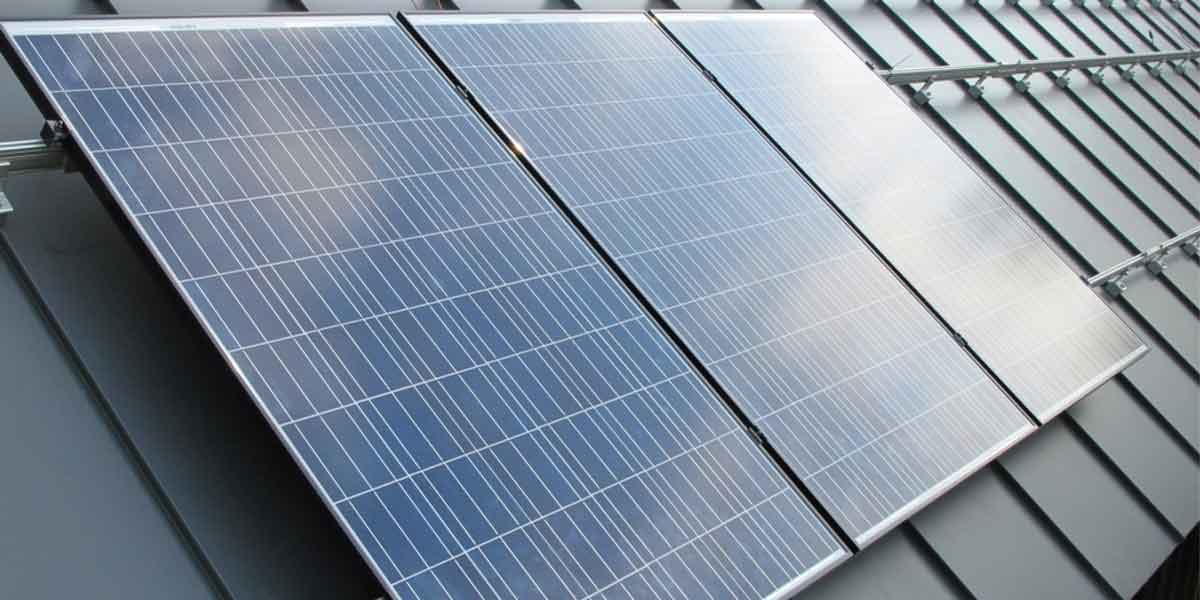
The most crucial decision to make after you’ve successfully switched to solar energy is to determine the specifics of your solar array. Solar panels act as the heart of the solar system as they trap the sun’s energy to generate solar electricity and power lights and appliances.
Therefore, they need direct sun exposure. This is why their placement on the roof of your house is essential. However, there are many things involved in the process, such as the different roof types that influence the process of generating solar electricity differently. Hence, it is essential to understand what roof type affects the process.
Generally speaking, every roof type can hold solar panels; however, every type of roof can affect the output of the solar panels.
A solar panel should be installed at a 30-degree angle (check best solar panel angles) and face south for optimum performance. Additionally, the solar panels must not be covered by any type of obstacles such as tree sheds, wires, solar panel covers, etc., which may hinder the process of obtaining solar energy from direct sunlight.
Thus, to learn about how solar panels work on different roof types, let’s go through each one of them in detail to find the best roof for solar panels.
- 1. Common Roof Types For Solar
- 2. Can Solar Panels Be Used as a Roof?
- 3. Can You Put Solar Panels on a Metal Roof?
- 4. Conclusion
Common Roof Types For Solar
Along with tile, wood and metal are considered as some of the best roof materials for solar panels. We have discussed about all plausible and best materials for solar panels in below sections.
1. Tile
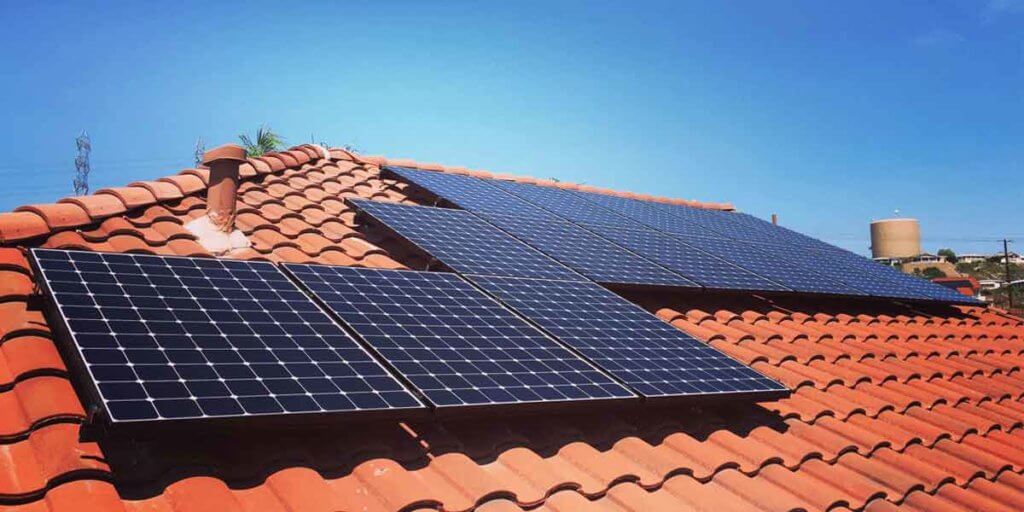
Although they are made of different materials themselves, tiled roofs are very common and can be found almost in every other house. It is important to analyze the materials used in manufacturing your tiles to get a better view of how to proceed further with the solar panel installations.
For example, installing solar panels on clay tiling may be way more expensive than on concrete tiling. The solar panels (either go for LG or Sunpower brand) must be installed with brackets attached to it to lift the panels up and rest them under the tiles.
2. Metal

Metal roofs with standing seams are considered the best roof for solar panesl. They are not only very durable and environment-friendly but can also outlive the solar panels sometimes. The additional standing seams make the installation and attachment of the solar panels incredibly quicker and cost-efficient.
Metal roofs are the perfect fit since they are made out of recycled materials, and therefore, with their standing seams, they allow easy installation of both PV panels and thin film. Additionally, these roof types reflect a significant amount of sunlight when the sunlight is not hitting the solar panel, resulting in a cooling effect.
3. Tar And Gravel
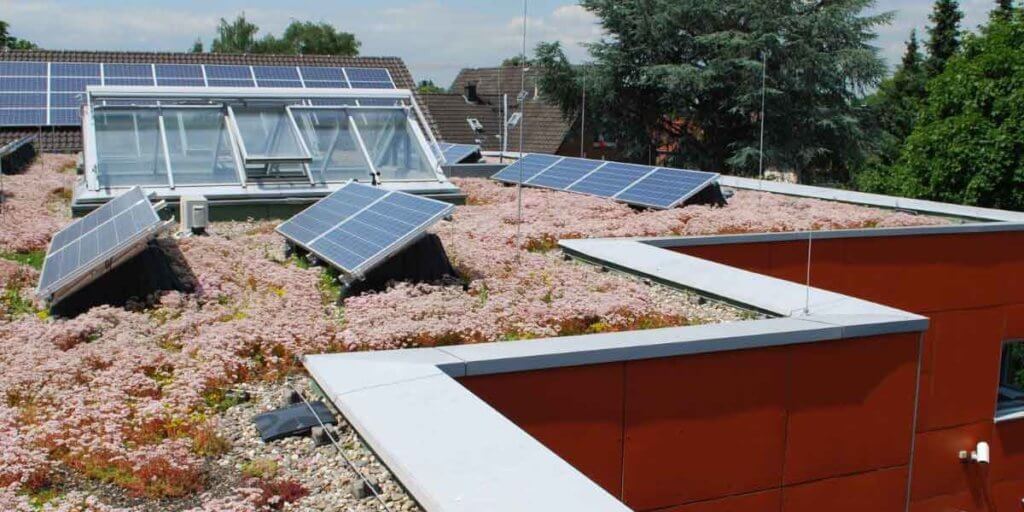
This is one of the oldest roof types and is usually common in houses with flat roofs. They are made out of layers of sheets attached with hot tar, and roofing felt.
They do require additional brackets to meet the 30-degree tilt, and therefore, the process is expensive. Without the additional expenses, tar and gravel roofs are very reliable and considered perfect solar panel installation options.
4. Torch Down
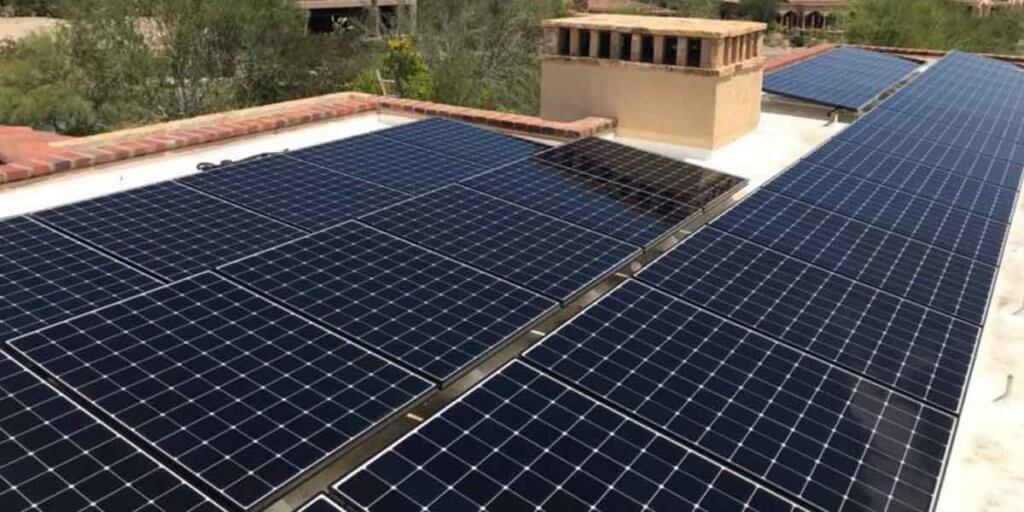
This is a uniquely designed roof type, commonly found in low-angle and flat-roof models. They are way more expensive than any other roof type; however, their ability to withstand tough weather helps them stand out. Therefore, if you are looking for the best and willing to pay the price, go ahead! It might just be the best choice for you.
5. Wood
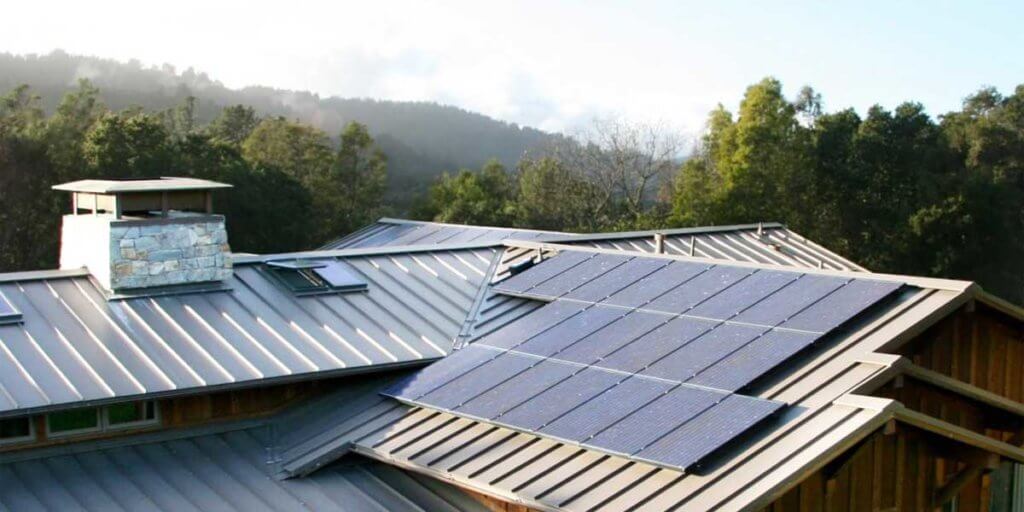
The wooden roofing usually depends on the way the roof is usually structured. They generally need shingles while installing the solar panels to position them. However, they may not be the best option for solar panel installation.
They are less viable because of their fire safety concerns, although one can install solar panels on wooden roofing. One may also consider ground-mounted systems or community solar to explore other options if deemed necessary.
6. Composite
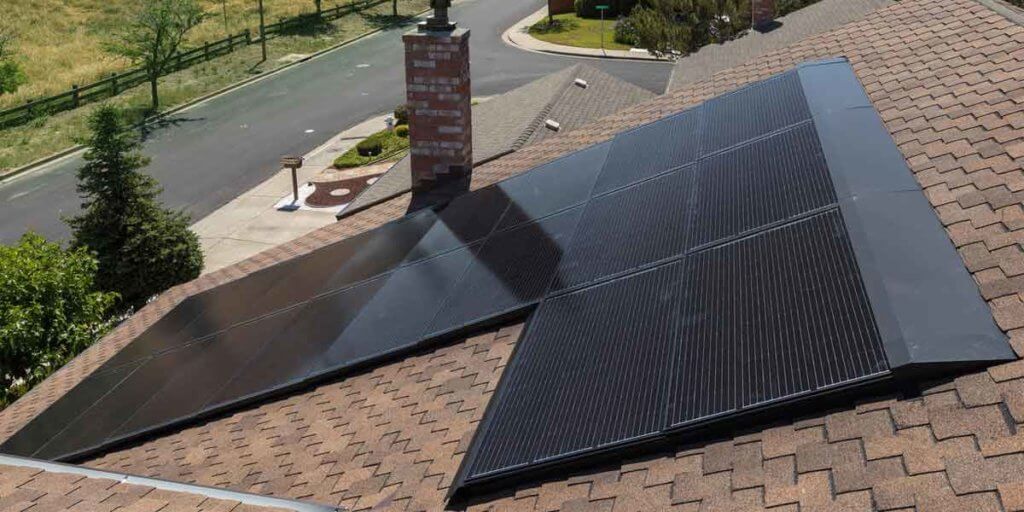
This is the most common and popular type of roofing on the list due to the structure and materials. Composite shingles (asphalt shingles) are used in solar panel installation on composite roofs, which are usually made from fiberglass or cellulose mats.
To produce the final product, asphalt and other minerals are added accordingly. There are many benefits of using composite roofing, such as cheaper cost, flexible appearance, durability, etc.
Can Solar Panels Be Used as a Roof?
To answer that question in simple words, yes, solar panels can be used as a roof. However, there are a few things that one should keep in mind.
The location of where the panels are installed plays a massive role in this process. Additionally, one should be very careful about the solar panel’s direction (and the location at which it is placed) to avoid any kind of installation error or unnecessary damage.
To use solar panels as a roof, you’ll have to consciously rearrange them in a way that they can master the prevention of leakage. However, you must remember that doing this won’t be easy because you’ll be required to spend a lot of money to purchase as many solar panels as required to cover the whole area for leakage prevention.
If there is enough access to sun exposure and the direction is perfect, you are good to go with installing solar panels on your roof. To know more about solar panels, you can refer solar questions answered guide.
Can You Put Solar Panels on a Metal Roof?
As we discussed previously, metal roofs are considered the best roof type for installing a solar panel. It is because metal roofs are a lot more durable, which assures the prevention of roof leakage.
In return, it will save you from the unnecessary expenses of removing and reinstalling the solar panel again. Metal roofs with standing seams are the best since the standing seam acts as a support to hold your solar panels with the help of a clamp system without having to drill holes into your roofs’ walls. Thus, this reduces the overall installation labor as well as system costs.
In general, solar panels are manufactured in two simple forms, the classic, metal-framed, standing crystalline photovoltaic solar panels and the newer, thin-film solar laminate sheets. However, here are a few things to remember while installing a solar panel on a metal roof.
- Solar panel installation on metal roofs is often guided by straddle blocks and mounting clamps, which creates a secure, parallel environment for well-placed solar panel adjustment.
- Solar panels, and their absorption of sunlight, can prevent the metal roof from becoming as hot as it might have, allowing you to ensure an even longer lifespan of your roofing installation. This is a nice side-benefit. It can also decrease your air-conditioning-associated costs during the heat of the summer.
- Metal roofs also allow for two different styles of solar roof panel installation. IPV panels are the most popular in North America, but PV panels have higher efficiency per square inch and require less upkeep and energy than silicon solar cells.
Solar Panel Installation on a Metal Roof: Pros and Cons
Advantages of Installing Solar Panel on a Metal Roofing

1. Installation is Easy
One of the biggest advantages of installing solar panels on metal roofs includes easy installation. Most solar panel manufacturers opt for mounting options to install panels easily on a range of roofing systems. No matter what type of metal roof you have, there is likely a drill-free, hole-free process for installation.
Even corrugated roofs, with their much thinner profile and lack of an external structure to which installers can attach solar panels and support traditional solar panels. The roof cannot support the panels on its own, but solar panels can be attached to the internal support structure of the roof.
2. Durability
Well, some solar panels last up to 30 years and some, even more, depending upon the kind of maintenance and amount of care put into them.
Therefore, to achieve cost-effective solar energy production, the life expectancy of the roof type should outlive the PV panels that you want to opt for. Thus, metal roofs offer the same kind of durability needed to generate cost-effective solar energy.
3. Sustainability
A good reason to opt for metal roofs over any other type is that they are manufactured from recycled materials, which will help promote environmental sustainability. You’re contributing to increasing the utilized recycled materials to ultimately reduce or eliminate pollution.
4. Energy Efficiency
Metal roofs that usually come with a reflective paint coat keep homes cool even during the summer. Therefore, installing solar panels on such roofs helps reduce the energy used to regulate indoor temperature, which, as a result, the combination of metal roofs and solar panels enables a person to attain higher levels of energy efficiency and cost-efficiency.
5. Resilient to High Winds
Metal roofs generally perform well in high winds as compared to other roof types. However, you must ensure that the solar panels you decide to use are fastened securely and correctly using brackets.
The correct way to do it is by fixing it through the highest point in the metal roofing while setting a seal between the brackets and the metal sheets. Thus, this arrangement helps to ensure that the solar panels are secured to the metal roof and ready to benefit from the metal roof’s high resilience to high winds.
Disadvantages of Installing Solar Panel on a Metal Roofing
1. Might need custom Hardware
Since some installations require custom brackets, having a standing seam on a metal roof helps to install the solar panels without drilling holes on the roof wall.
Although this installation method retains the water-tightness of your roof, you may have limited options to choose from as you must first find a solar company compatible with the brackets. On the contrary, some installations do require drilling holes. Therefore, having a corrugated metal roof helps install the solar panels by drilling down the support structure for your roof.
2. Maintenance is Difficult
One major disadvantage of installing a solar panel on metal roofing is that it will be difficult to access the cables if something goes wrong with the wiring. This is because some of the wires are underneath the solar panels, which are placed on the metal roof, and hence, the space to access them is thin to impossible.
Additionally, the cleaning of the solar panels seems quite tacky as many people find it challenging to climb up the roofs for the cleaning process. Therefore, if you have solar panels on your terrace, you will be able to clean it more often since it’s much more accessible than a roof.
Conclusion
Although there are different types of solar panels out there, some expensive and some are cheaper, there are certain criteria involved in ranking the best among all: efficiency, temperature coefficient, material warranty, etc. Similarly, among the widespread options of different roof types available in the market, only a few can be labeled as the best-suited solar panel installation.
Considering all the pros and cons of the solar panel installation on metal roofs and how other roof types perform simultaneously, it is clear that metal roofs are undoubtedly the best on the list.
They not only favor the conditions for perfect installation but are also very durable and sturdy themselves. Therefore, one can undoubtedly opt for metal roof solar panel installation for a better and more convenient experience at a low cost.

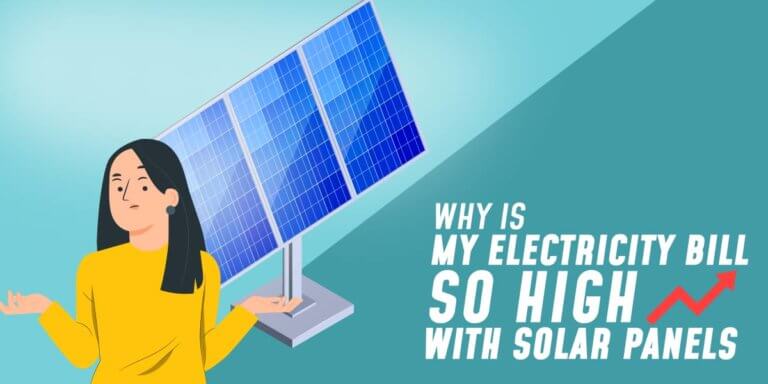




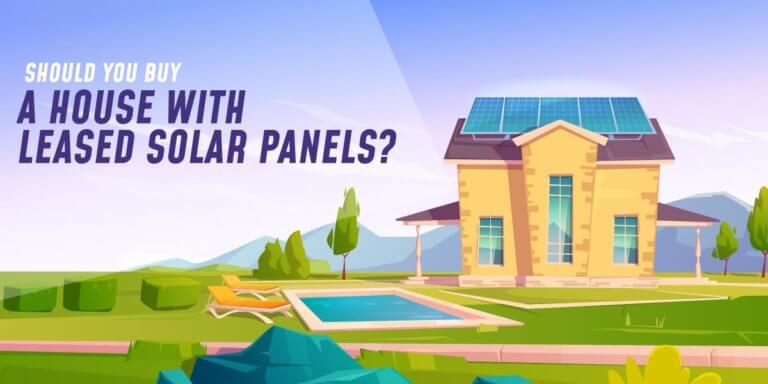
The energy efficiency that can come from metal roof solar panels really sounds interesting to a homeowner like me. Those kinds of upgrades could really make our home a lot easier to pay for, especially since we still plan to continue using more and more devices and appliances around here. I’ll take your advice about this and get a roofer to help us with this kind of renovation as soon as possible.